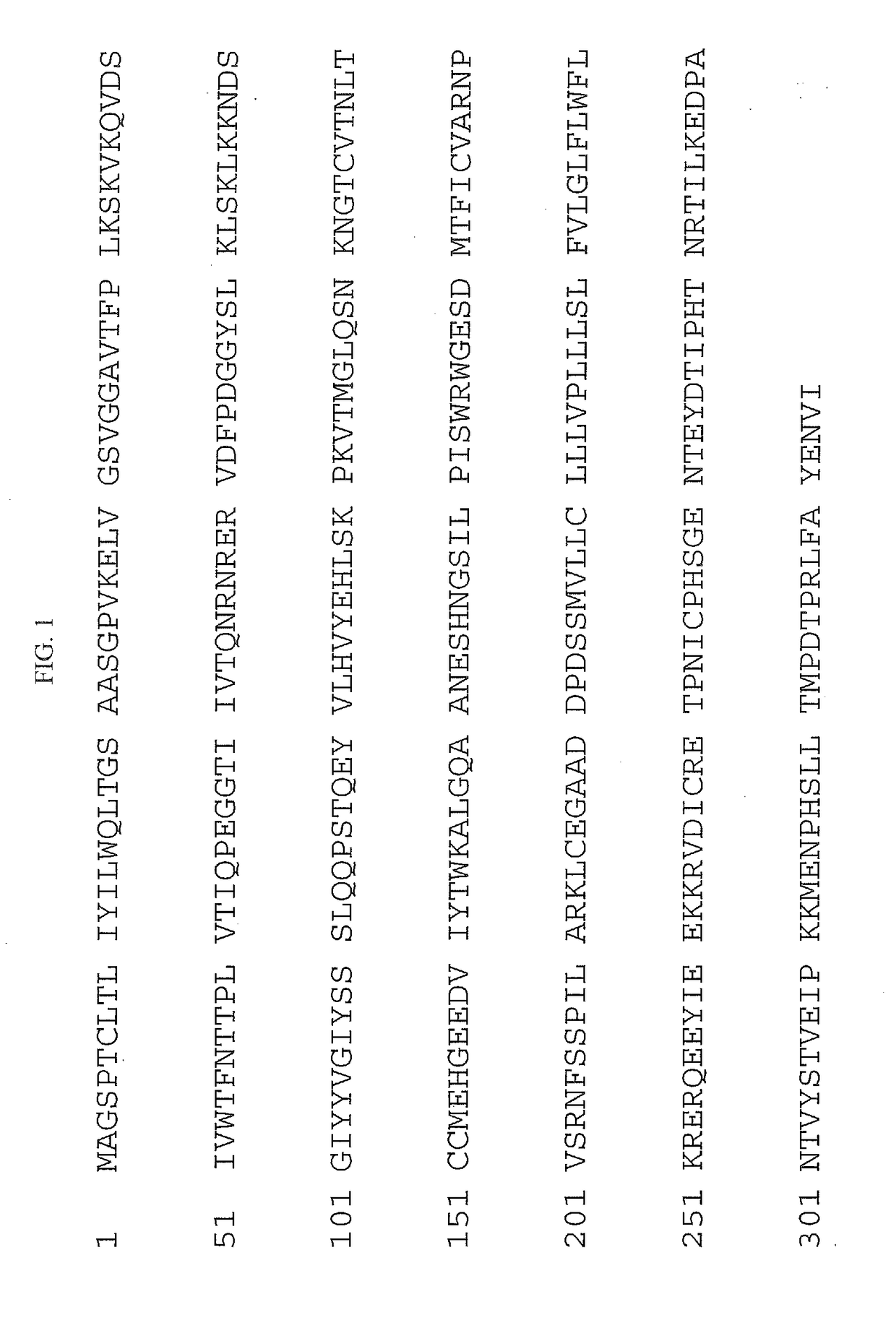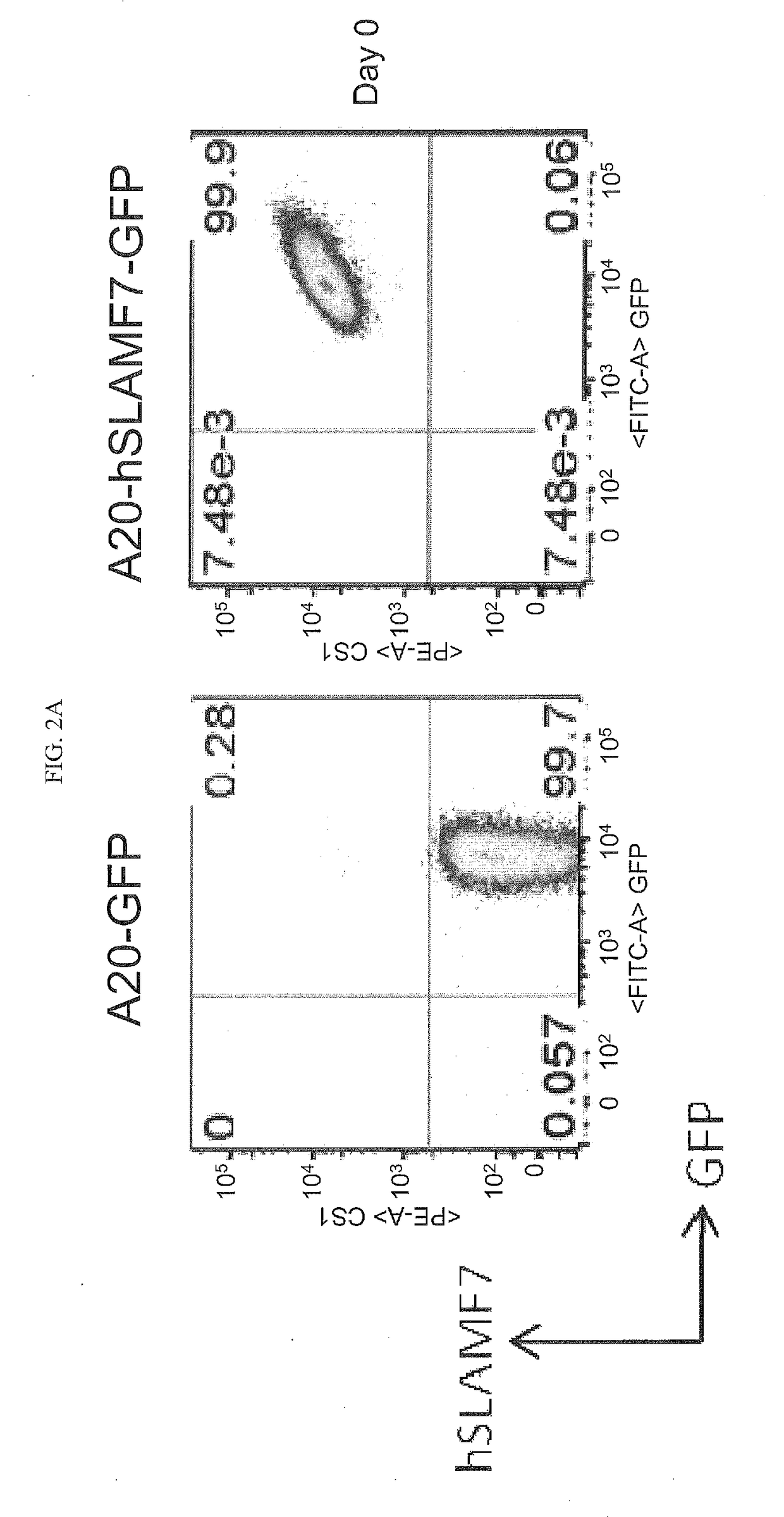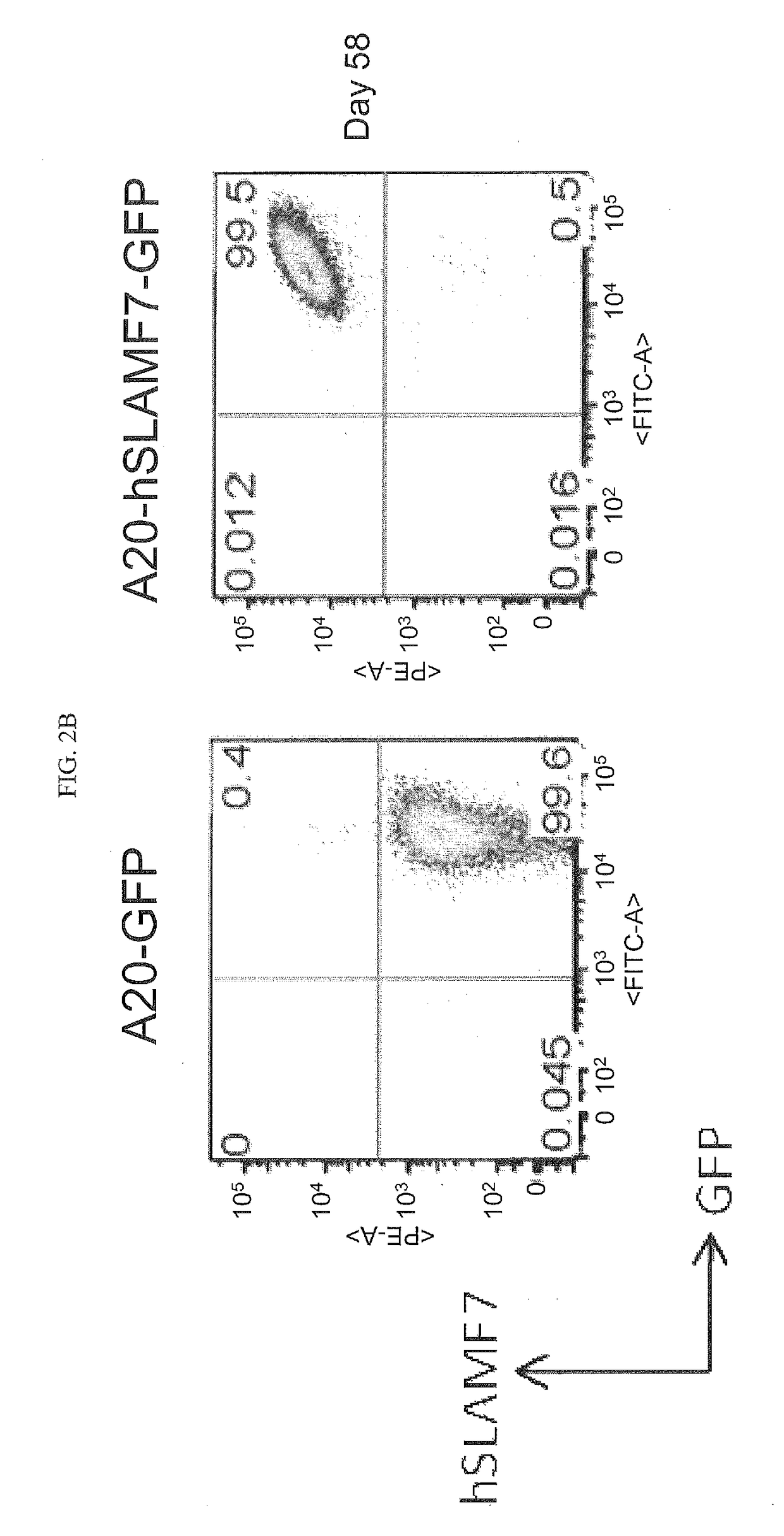Combination of Anti-cs1 and Anti-pd1 antibodies to treat cancer (myeloma)
an antics1 and antipd1 antibody technology, applied in the field of myeloma, can solve the problems of relapse of almost all patients with multiple myeloma, debilitating side effects, fatigue, etc., and achieve the effects of synergistic treatment effect, good partial response, and stable diseas
- Summary
- Abstract
- Description
- Claims
- Application Information
AI Technical Summary
Benefits of technology
Problems solved by technology
Method used
Image
Examples
example 1
Method for Cloning SLAMF7 cDNA into pFB Retroviral Vector
[0243]cDNA sequence from human SLAM family member 7 (hSLAMF7; synonyms: CS1-L) was cloned into retroviral vector encoding green fluorescent protein (GFP) (pFB-IRES-GFP, Stratagene).
[0244]The vector contains the murine leukemia retrovirus (MLV) packaging sequence and a multiple cloning site (MCS), flanked by the MLV long terminal repeat (LTR) regions.
[0245]The 5′ LTR functions as a strong promoter upon chromosomal integration of DNA. The pFB plasmid contains a cassette comprising an ECMV internal ribosome entry site (IRES) followed by a gene encoding GFP.
[0246]The cloned sequence of the encoded SLAMF7 protein sequence is provided in FIG. 1 (SEQ ID NO:7).
example 2
Method for Generation of A20 Mouse Tumor Cell Line Expressing Human SLAMF7
[0247]The A20 mouse B lymphoma cell line was transduced with either retrovirus encoding GFP alone or with retrovirus encoding both GFP and hSLAMF7. A20-GFP and A20-hSLAMF7-GFP lines were sub-cloned, individual clones were picked and expanded in vitro. A20-GFP (clone D3) and A20-hSLAMF7-GFP (clone F11) were maintained in culture and expression of hSLAMF7 and GFP were assessed on day 58 to confirm the stability of hSLAMF7 expression.
[0248]Cells were stained with PE-conjugated anti-human SLAMF7 (clone 162.1, BioLegend) and the frequency of cells staining positive for GFP and hSLAMF7 was determined. As shown in FIGS. 2A-B, A20 cell lines that stably express GFP and hSLAMF7 were obtained.
example 3
Method for Determining Whether Elotuzumab Binds to Human SLAMF7 Expressed in A20 Cells
[0249]To determine whether hSLAMF7 expressed in A20 is recognized by Elotuzumab, A20-GFP and A20-hSLAMF7-GFP cells were stained with Elotuzumab. A20-GFP or A20-hSLAMF7-GFP cells were incubated with 6.25 ug / ml Elotuzumab (BMS), washed twice and incubated with anti-human IgG-PE secondary antibody. The frequency of cells staining positive for GFP and hSLAMF7 was determined using flow cytometry.
[0250]Surface staining, indicating Elotuzumab binding, was detected only in A20-hSLAMF7-GFP cells and not in A20-GFP cells as shown in FIG. 3.
PUM
| Property | Measurement | Unit |
|---|---|---|
| time | aaaaa | aaaaa |
| time | aaaaa | aaaaa |
| volume | aaaaa | aaaaa |
Abstract
Description
Claims
Application Information
 Login to View More
Login to View More - R&D
- Intellectual Property
- Life Sciences
- Materials
- Tech Scout
- Unparalleled Data Quality
- Higher Quality Content
- 60% Fewer Hallucinations
Browse by: Latest US Patents, China's latest patents, Technical Efficacy Thesaurus, Application Domain, Technology Topic, Popular Technical Reports.
© 2025 PatSnap. All rights reserved.Legal|Privacy policy|Modern Slavery Act Transparency Statement|Sitemap|About US| Contact US: help@patsnap.com



